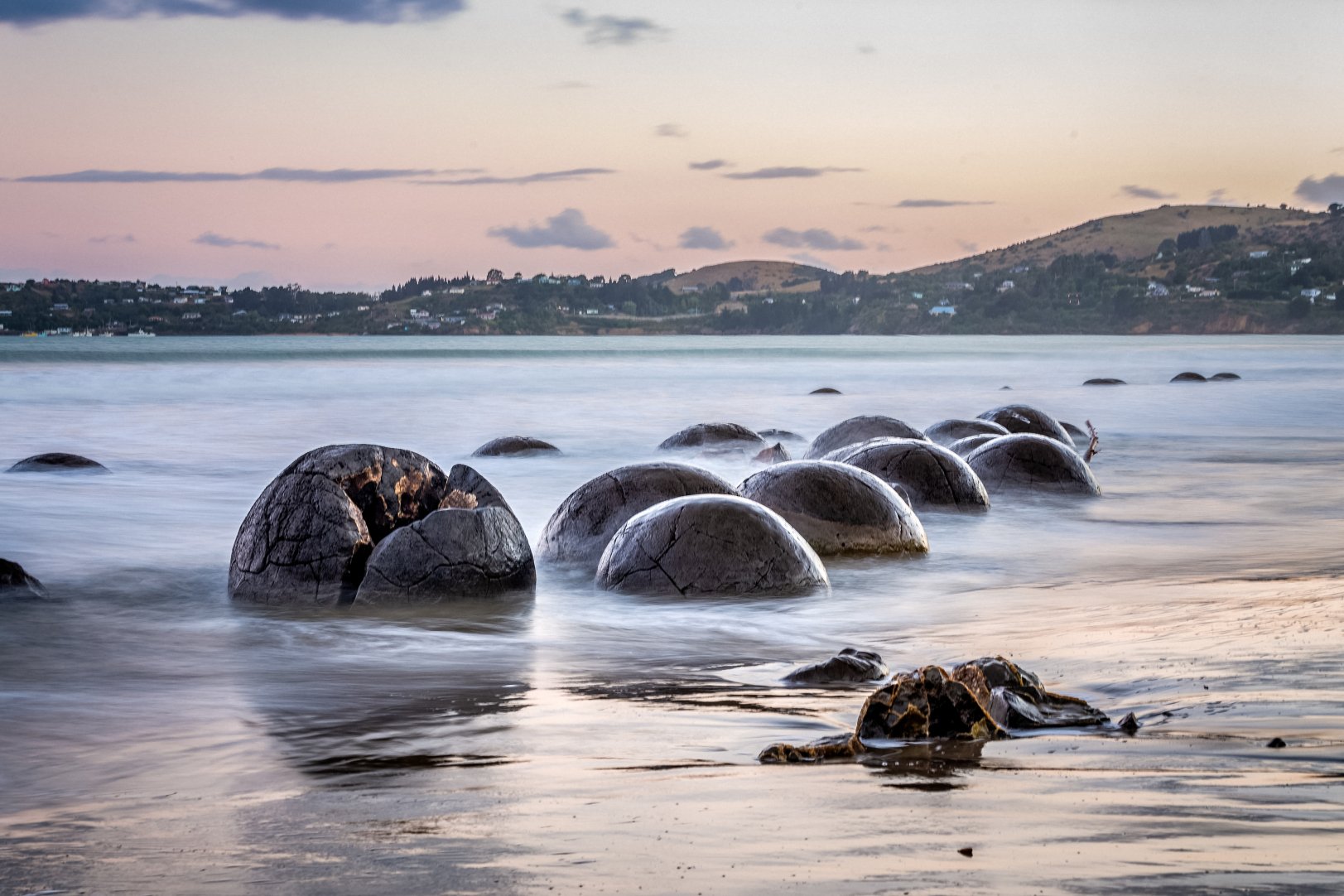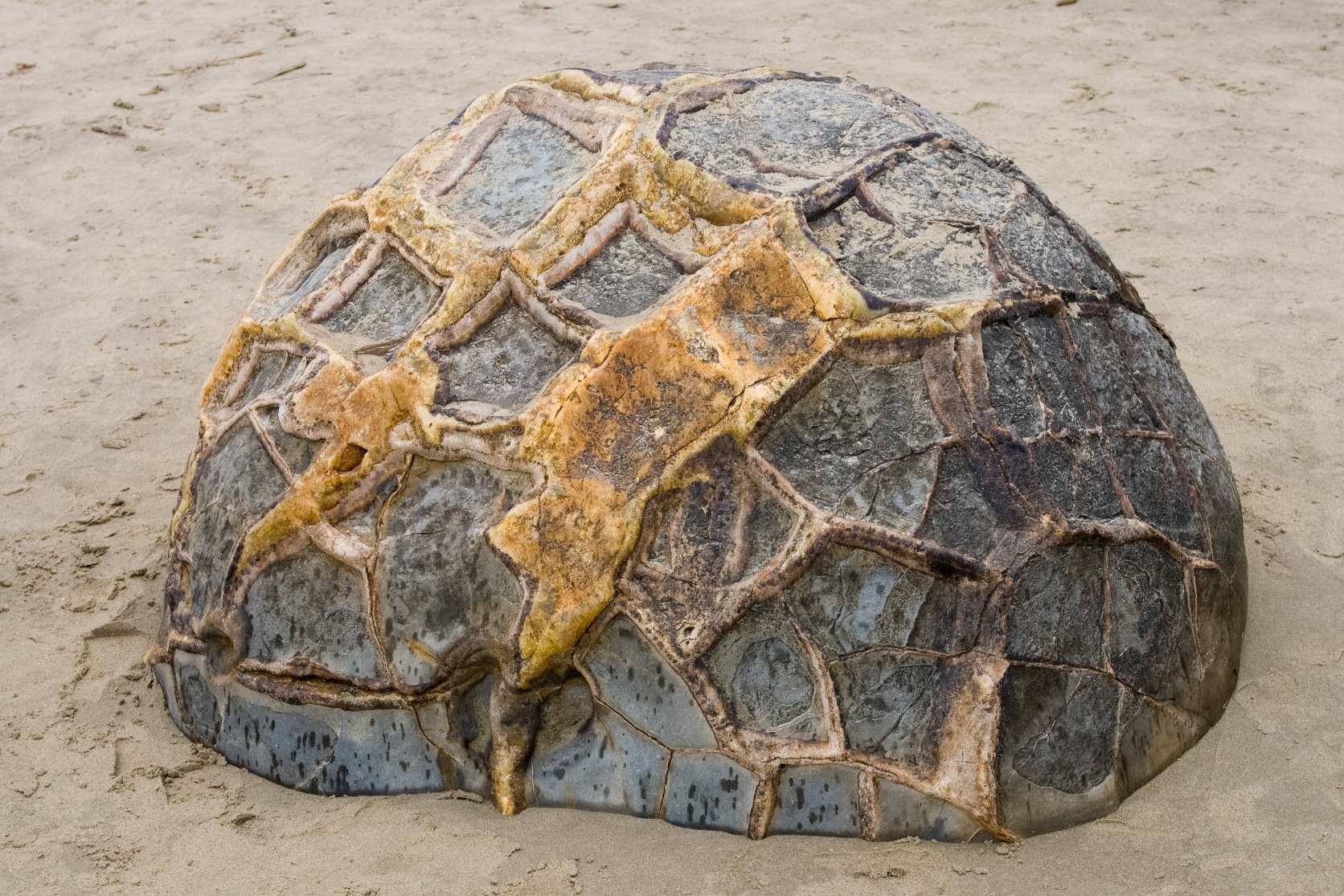Nestled along the coastline of New Zealand’s North Otago region, lies a mesmerizing natural wonder that has intrigued scientists, locals, and visitors alike for centuries – the enigmatic Moeraki Stone Spheres.

These enigmatic spheres, appearing as though they have been haphazardly scattered on the beach, exude an otherworldly aura. Ranging in size from 0.5 meters to 2.2 meters in diameter, these rocks possess an impressive weight, reaching up to seven tons.
Believed to have formed over 65 million years ago, these natural wonders are a testament to the forces of nature. The smooth, spherical shape of the Moeraki stones is the result of a gradual process known as concretion. As layers of sediment build up around a central core, minerals crystallize and harden over time, forming these unique and perfectly rounded boulders.
Intriguingly, numerous spheres exhibit distinctive patterns and crevices, reminiscent of the intricate shells of tortoises.

Beyond their sheer beauty, the Moeraki Stone Spheres hold a special place in Māori mythology and local folklore. Some believe they are the remnants of gourds washed ashore from the legendary canoe of Ārai-te-uru, while others see them as sacred objects carrying spiritual energy.
The Ārai-te-uru canoe (one of the large ancestral canoes that came from Hawaiki) was wrecked on Shag Point while on its way south in search of greenstone. Food-baskets and kūmara (sweet potato) on board were washed ashore. The kūmara became irregularly shaped rocks and the circular food-baskets became the Moeraki Boulders, called by the Māori Te Kaihinake (the food-baskets). The reef at the mouth of the Shag River is said to be the petrified hull of the canoe, and a prominent rock nearby to be the mortal remains of its navigator, Hipo.
Visiting the Moeraki Stone Spheres is an awe-inspiring experience, allowing you to marvel at the wonders of our natural world and connect with the ancient stories woven into the fabric of this remarkable landscape. Make sure to add this extraordinary destination to your travel bucket list!




